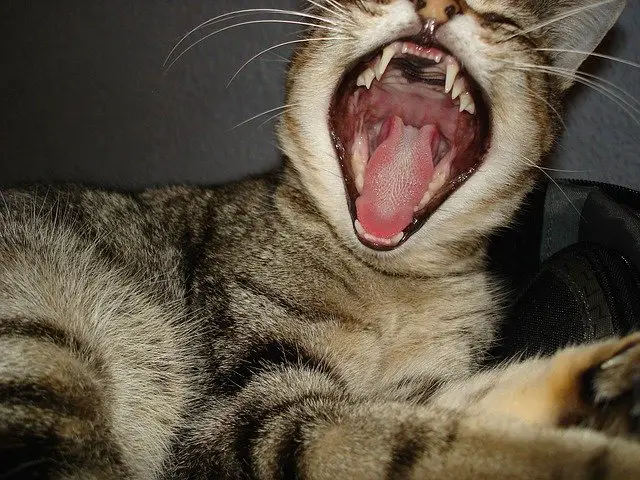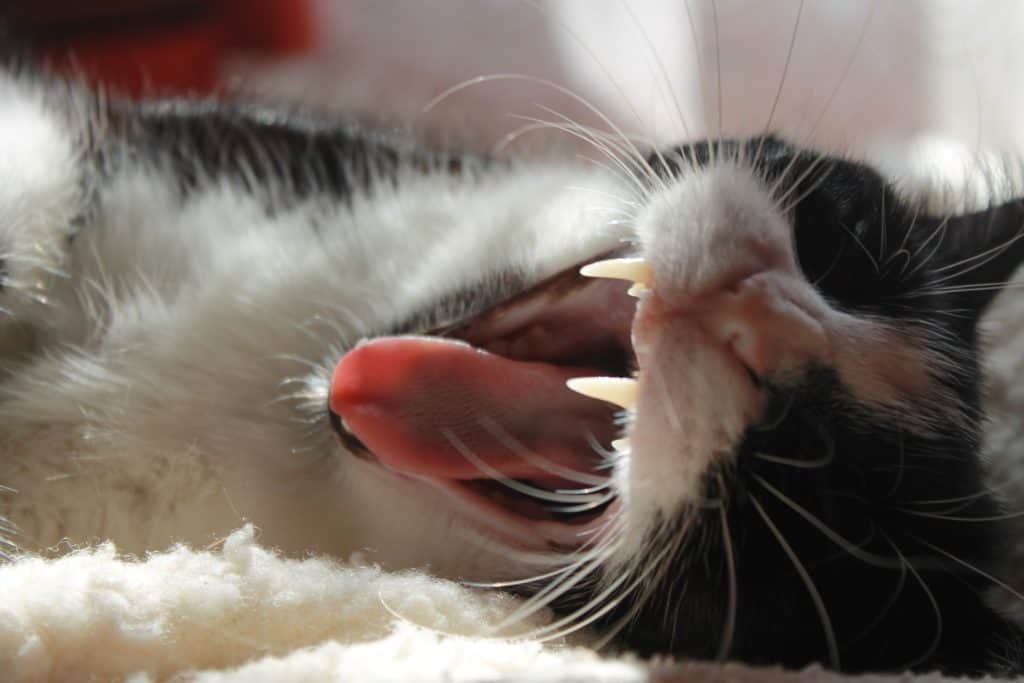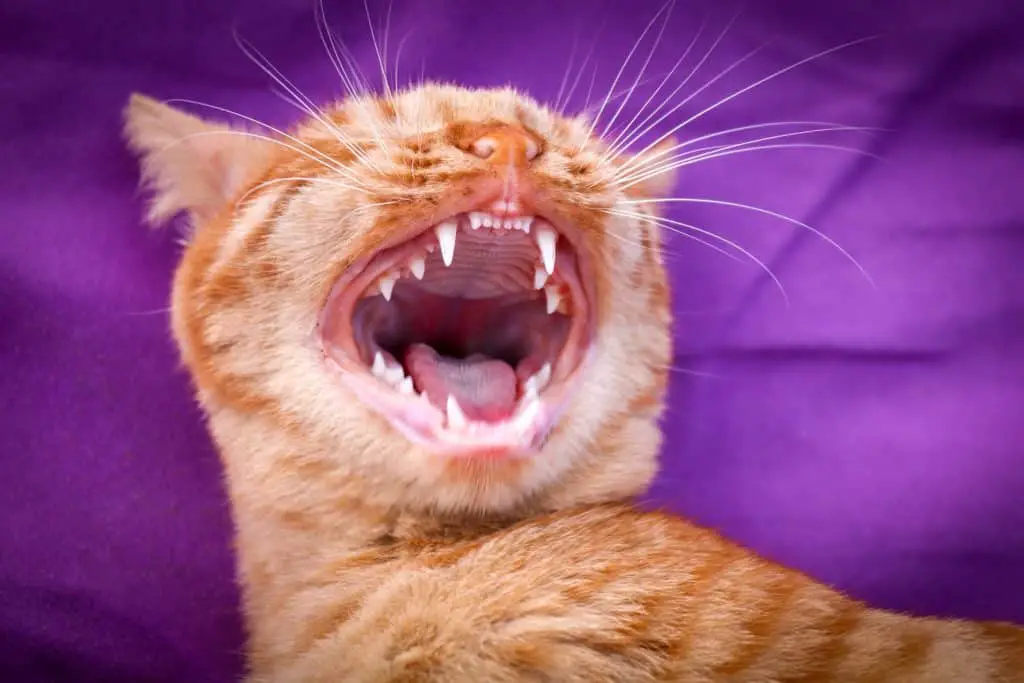Brushing your cat’s teeth helps prevent gum diseases. Unhealthy teeth and gums can lead to gum disease that can threaten the oral health of your cat. Learning how to brush a cat’s teeth will help keep your cat healthy.
Contents
- 1 How to Brush a Cat’s Teeth
- 2 What to Use to Brush a Cat’s Teeth?
- 3 How Often Do You Brush Your Cat’s Teeth?
- 4 Do I Need to Use a Special Toothpaste to Brush My Cat’s Teeth?
- 5 How Often Should I Have My Cat’s Teeth Professionally Cleaned?
- 6 Alternative Home Care Approach
- 7 Training Your Cat to Accept Tooth Cleaning
- 8 Frequently Asked Questions
- 9 Conclusion
How to Brush a Cat’s Teeth
Consider doing these when you brush your cat’s teeth:

1. Gently Handle Your Cat’s Mouth
Reward your pet with a treat whenever they stay calm. If they resist, let them rest. Once your cat gets used to this routine, add a soft, moist gauze sponge around your finger and gently rub it along your pet’s teeth/lips. To properly brush your cat’s teeth takes time and you need to be consistent and patient by doing it daily.
2. Introduce Toothpaste to the Process
When your cat is familiar with the sponge rubbing along their teeth, add a little veterinary paste or gel on the sponge. Award your cat if they remains calm.
3. Use a Toothbrush
Use a comfortable toothbrush with toothpaste. Touch it softly to your cat’s lips, teeth, and gums. Reward your cat with treats if she stays calm.
4. Apply Brushing Action
Use circular motions to brush your pet’s teeth and gums. First, clean the outside part of your pet’s teeth. Slowly brush the back and side area of your pet’s teeth. Do this once daily for 2-3 minutes.
What to Use to Brush a Cat’s Teeth?
When brushing your pet’s teeth, use a specially designed toothbrush built for cats. Use a moistened cat toothbrush with soft bristles, veterinary paste for cats, soft gauze sponge for wiping and treats to reward your cat.
You can also use a toddler’s toothbrush, a finger toothbrush, or a cotton swab. However, use a “finger toothbrush” if your cat is comfortable with your finger on his/her mouth.

How Often Do You Brush Your Cat’s Teeth?
Cats require regular brushing using oral care products like pastes, toothbrushes, dental diets, and treats to help with your cat’s dental health needs. That’s why you should get your cat used to a dental care routine and accept brushing their teeth.
Many cats aged 2-3 years can get dental diseases like periodontal disease, a gum infection that destroys gums and begins as gingivitis. Unfortunately, gingivitis can damage your kitten’s gum line and cause painful gums, tooth loss and even death. Brushing your cat’s teeth 2-3 times weekly can prevent dental disease and periodontal disease and help maintain long-term oral health.
To begin cleaning your cat’s teeth, wait until after your kitty is no longer teething, usually about six months old, and when the adult teeth have increased in size. Other products with a veterinary oral health council (VOHC) Seal of Acceptance like water, food, and chew treats can also help.
Do I Need to Use a Special Toothpaste to Brush My Cat’s Teeth?

Pet toothpaste often use flavors like poultry, fish, malt, and other feline-friendly varieties. Ensure the Veterinary Oral Health Council (VOHC) has approved your cat’s paste.
How Often Should I Have My Cat’s Teeth Professionally Cleaned?
As opposed to cleaning your cat’s teeth at home which may not be always effective, I need to check your cat’s teeth once a year to prevent serious dental diseases like gingivitis. According to the American Veterinary Medical Association, untreated dental diseases can damage vital organs like the heart, liver, and kidneys.
If you notice any of the following, bring your cat so I can check for any of the following:
- Broken or loose teeth
- Bad breath
- Teeth covered with tartar
- Reduced appetite
- Pain around the mouth
- Bleeding in the mouth
- Inflamed gums
- Excessive drooling
- Pawing at the face
Alternative Home Care Approach
If your cats do not want their teeth cleaned, follow these tips:
- Add dry food to your cat’s diet to maintain healthy gums.
- Use cat dental treats to reduce plaque and tartar.
- If your cat likes a certain pet toothpaste, allow them to lick it.
- Use gels to minimize bacterial growth in your cat’s mouth.
- Use a special diet formulated to control plaque.
Training Your Cat to Accept Tooth Cleaning
While it can take several weeks before your cats learn to brush their teeth, make it a positive experience by doing the following:
- Be Consistent: Similar to daily dental care, selecting a consistent time to clean your cat’s teeth is crucial because cats love routine.
- Pick a Reward: Select a reward that inspires your cat to cooperate when cleaning its teeth.
- Set the Perfect Environment: Put your cat on a chair and use a calm voice. If your kitty feels it’s a fun game, they’ll play along and you’ll enjoy cleaning your cat’s teeth every day.

Frequently Asked Questions
How Do I Prepare My Cat for Teeth Cleaning?
To prepare your cat for teeth cleaning, select a time when your cat is relaxed and allow them to lick some cat paste off your finger while stroking your cat’s head. This approach assures your cat there’s nothing to fear.
Can I Use Human Toothpaste?
No, you cannot use human toothpaste. Unlike cat paste that’s safe, human paste has high sodium content that can cause digestive issues or upset your cat’s belly if swallowed.
Can I Brush Using Baking Soda?
No, you cannot brush using baking soda. Similar to human paste, baking soda contains high alkaline levels that can upset the digestive tract in your pet’s stomach. Moreover, it has a bad taste, which can make your kitten resist teeth cleaning.
How Long Should I Brush My Cat’s Teeth?
You need to brush your cat’s teeth for about 10 seconds every day and gradually increase the duration to 30-45 seconds. Note that there might be a small amount of bleeding when you clean the teeth for the first time.
Conclusion
Learning how to brush your pet’s teeth can help prevent oral and gum diseases. Ensure you use the right equipment to clean your cat’s teeth. Also, visit the vet once a year for medical checkups.
